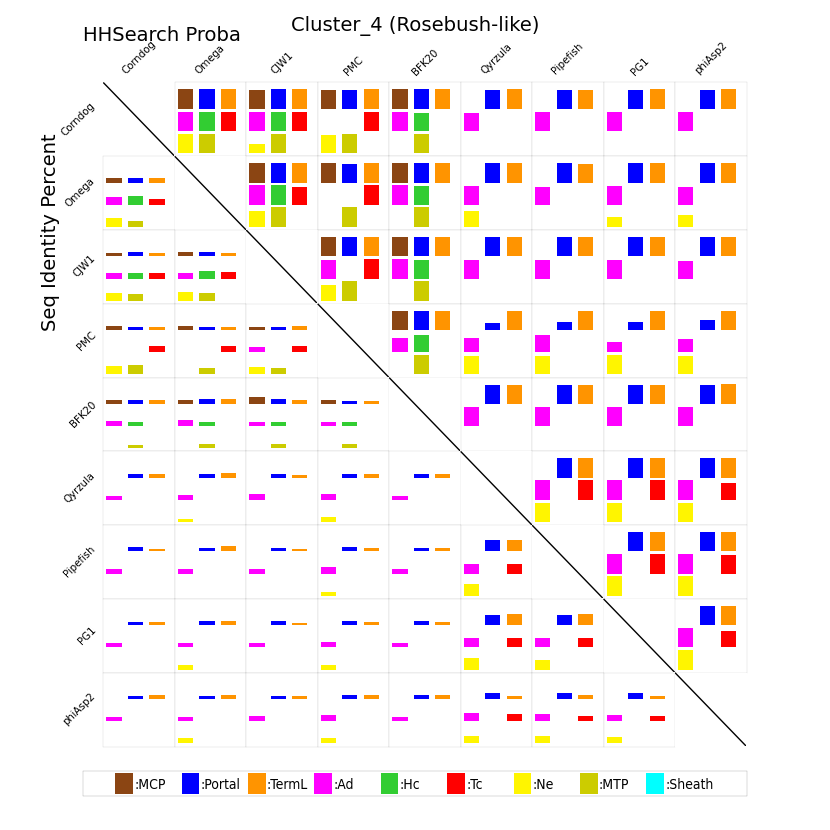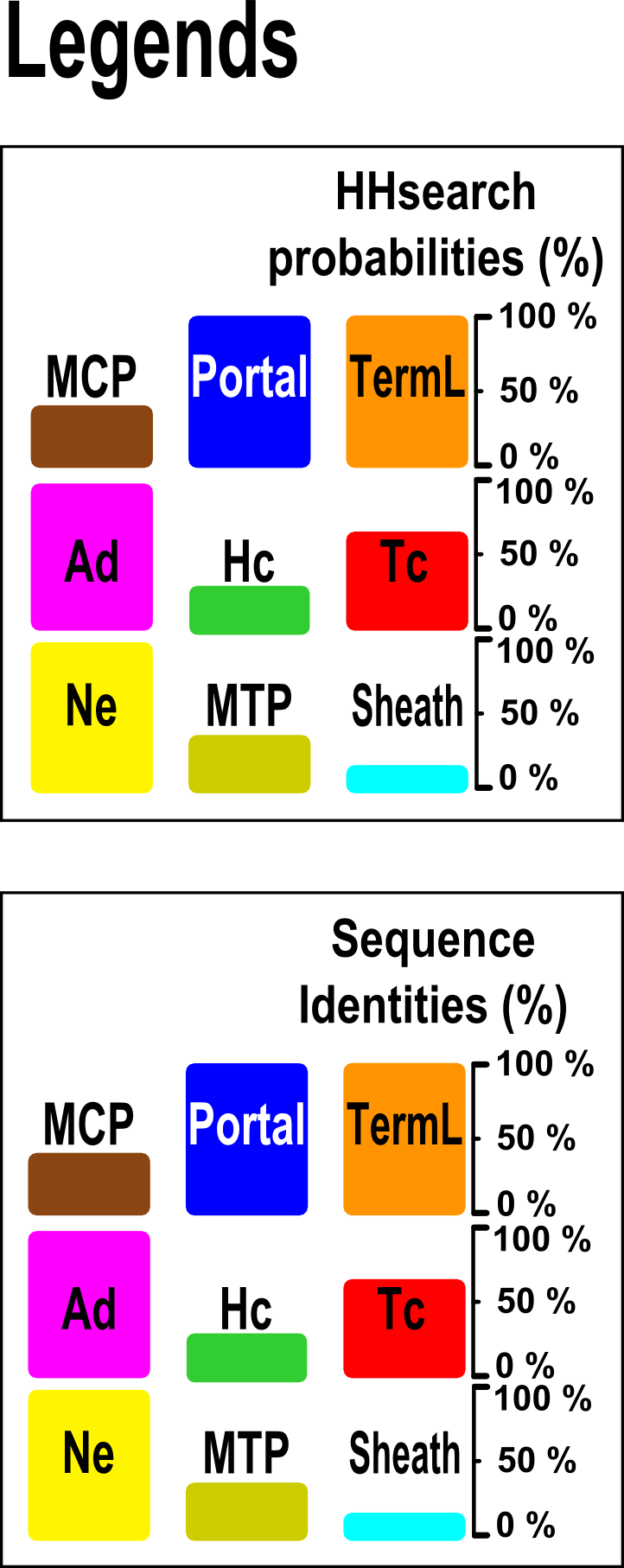The neck is the head-to-tail interface which is formed by the connector and the tail-completion proteins. The connector is formed by the portal and the head-completion proteins. (Click here for a general description of the assembly pathway of tailed bacteriophages)
adopts the structural organization of the Siphoviridae phage SPP1 neck. It is formed by a portal protein, an Ad1 (Adaptor of type 1), a Hc1 (Head-closure of type 1), a Ne1 (Neck protein of type 1) and a Tc1 (Tail-completion of type 1) proteins.
is strictly composed of siphophages which all but one infect the same class of bacteria: all the hosts belong to Actinobacteria except the host of phage T5 (E. coli) which belongs to Proteobacteria. About half of the phages, lack both Hc1 and the MCP genes (7 over 17) or only Hc1 (phage T5). In these cases, the gene organization is modified compared to the other half of phages belonging to cluster 4. They exhibit a lot of inserted genes (around 10) between the Portal and Ad1 genes and Ne1 is systematically positioned after the gene Tc1 in the genome. The other half of phages display the tight [TermL-x(0-1)-Portal-x(1-2)-MCP-x(0-1)-Ad1-Hc1-Ne1-Tc1] scheme observed in clusters 1-3, suggesting a common structural organization.


(-) indicates that the genetic context is given in the reverse order. For more clarity, numbers between square brackets indicate the number of unannotated genes.
For every pair of phages sharing a given neck type and for all the components of the capsid-neck-tail module they share (out of the nine possible components described below), we calculated the corresponding HHsearch probability and sequence identity scores. The resulting scores are illustrated with colored squares whose size is proportional to the considered score (similarity scores lie in the bottom half matrix while HHsearch probabilities lie in the top half matrix). See legend below for square colors and for identity or HHsearch probability scores.

